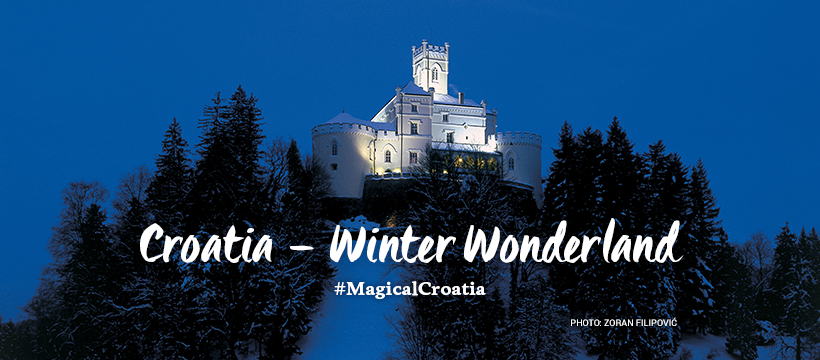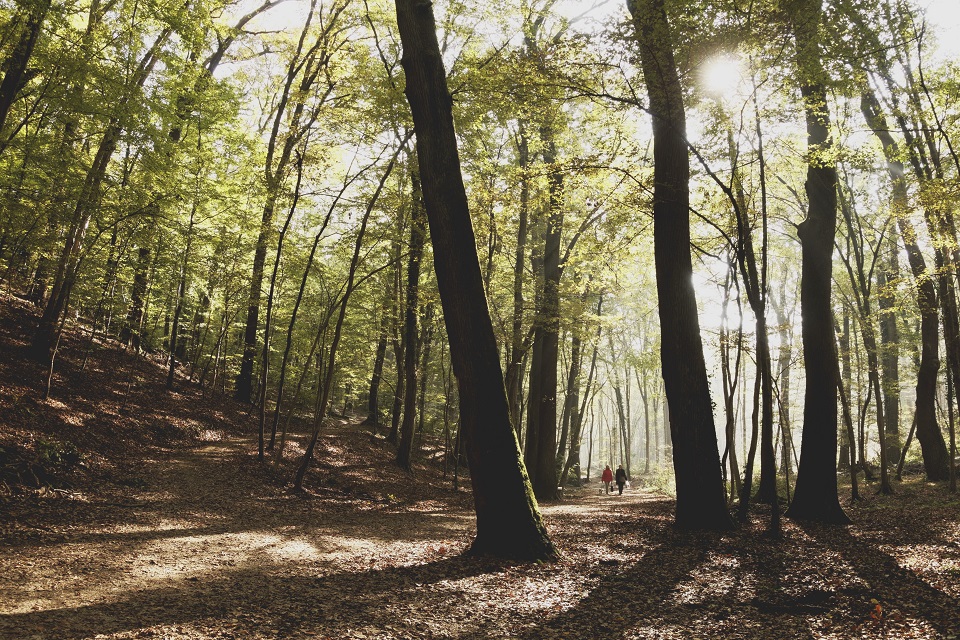HTZ Launches New Promotional Campaign "Croatia: Winter Wonderland"
ZAGREB, 29 Nov 2021 - The Croatian Tourist Board (HTZ) has launched a new campaign, called Croatia - Winter Wonderland," to promote the winter beauties of Croatian destinations and tourism-oriented products such as local cuisines and wines, culture and wellness, the HTZ announced on Monday.
The campaign will run until 10 January 2022 and will cover 14 foreign markets, namely Germany, Slovenia, Austria, Poland, the Czech Republic, Slovakia, Hungary, Italy, the Netherlands, France, Great Britain, Belgium, Sweden, and Norway. It will be conducted via social networks, including Facebook, Instagram, Twitter, TikTok, and Pinterest, using the tags #CroatiaWinterWonderland and #MagicalCroatia.

Croatia Full of Life on Facebook (Photo: Zoran Filipović)
"The promotional campaigns we conducted this year have positioned our country as a high-quality, safe, and well-prepared destination. That we were very successful in this was confirmed by the European Travel Commission, which highlighted that the Croatian National Tourist Board was the most active European tourist organization on the portal and social networks Visit Europe during its autumn campaign, and as such, a great example to tourist organizations in other countries," HTZ director Kristjan Staničić said.
The winter campaign will also focus on the Christmas markets in Croatia and will include traditional recipes and customs, and the best locations for taking winter photos.
If epidemiological conditions in the country and in the key markets allow, the HTZ will organize a trip for international influencers to Rab island, Plitvice Lakes National Park, Zagreb, and Dubrovnik to experience the winter magic in these places for themselves.
For more travel news, click here.
Croatia Winter Finished According to Latest Weather Forecasts
According to the most recent forecasts, Winter in Croatia is finished. In the current part of the climatological winter, which began on December 1, we have not yet had a single winter cyclone, and no significant snowfall, even in most of the higher elevations.
According to a report by DHMZ, measurable snow cover has been only recorded at 5 locations in Croatia as of this morning, the most of which was 5 centimeters in Zavižan, which will quickly melt, Istramet reports.
The lowlands of the interior of Croatia have recorded only a brief snowfall this winter, and central Istria has not even had any snow.
Croatia Temperatures Noticeably Above Average
In terms of temperature, we are well above average, especially in the highlands and the Adriatic. The plains of the interior of Croatia have been spared from temperature extremes by a prolonged inversion, but due to the more intense sun and wind, they will be even less frequent in the coming weeks.
Weekly Forecasts Indicate That Winter is Over
According to the ECMWF monthly forecast published on the EFFIS website today, winter in Europe is over.
Specifically, a positive temperature deviation is expected every week until March 1, which is the beginning of the climatological spring. The anticipated temperature deviations have been noticeable and the most evident in Russia, where the real winter breakthroughs are anticipated.
This is not to say that there won’t be any short-lived fronts or maybe cyclones which bring snow, but regarding big winter events, it seems that nothing significant will occur. This is further supported by the fact that less than average rainfall is predicted, which suggests the continued dominance of warm anticyclones, Istramet reports.

Darko Pribeg | Unsplash
What do long term forecasts say?
The Severe Weather Europe Service also announced yesterday what it expects to happen in February. They also predicted what spring might be like.
Given that high air pressure will remain over much of Europe and Asia, temperatures are expected to be above average for the season during February. This means that there is a greater likelihood that there won’t be any real winter weather over continental Europe. As Severe Weather Europe Service notes, there is always the possibility of a transitional cold pattern as a cold front could cross over Europe, but according to current forecast models there is very little likelihood of this. As we move into February, the polar vortex slowly loses its effect and any major change in dynamics, in terms of the arrival of cold fronts, would be too late to create a sustainable pattern of cold weather.
What kind of Spring is ahead of us?
According to ECMWF's Severe Weather Europe model; it has provided insight regarding what this year's spring in Europe might look like.
The ECMWF model suggests a spring pattern, which is like winter. High air pressure systems are evident in the North Pacific, Western Atlantic and Europe.
Taking the high air pressure into account for March, April and May; air temperatures are expected to be higher than average for this time of year in Europe and Asia.
As for precipitation, drier weather is expected in southern Europe, which correlates with higher air pressure. Continental Europe should experience average rainfall, which means that no long droughts are expected. Lower pressure over the Atlantic could lead to higher rainfall in Central and Northern Europe.

Danijela Froki | Unsplash
Zoran Vakula’s Long Term Weather Forecast
In an interview with Zoran Vakula of Slobodna Bosna, he revealed what to expect in the upcoming months.
"The data from DHMZ meteorological stations confirms that this winter so far is among the warmest, in many places on the Adriatic and in the highlands and among the 10 warmest in since the beginning of recorded weather measurements.”
“Even in long-term forecast calculations of most meteorological centers - there are no expected changes for the remainder of winter. For our part of Europe, it is still very likely that anticyclones - high-pressure fields with relatively frequent temperature inversions will be accompanied by the retention of relatively warm air in higher layers of the atmosphere, which will continue to be noticeable.”
“Therefore, it seems almost certain that the mean air temperature in the highlands and Adriatic will continue to be higher than the average, in many places considerably higher, while long-term fog and low retention clouds could ‘save’ lowlands from those above average highs. If this is the case, we will still have very little rainfall in the winter, but pollution in the lowlands could still be high. But I hope that we will still have some wind, which will make that impossible in the lowlands."
“Regarding summer, I do not have any long-term prognostic calculations, but according to what is available up to July – it is unlikely that there will be any long-term cool periods over the upcoming months in our part of Europe. Unless one arrives at the end of one month and lasts until the beginning of the following month, this isn’t evident in the calculations of the mean monthly air temperature, since periods with above average temperatures will likely prevail.”
“In contrast to this positive temperature deviation, precipitation forecasts are showing an increased likelihood of negative deviations, which are somewhat less than the perennial average. In short, it will be relatively warm and arid in the first part of 2020! But of course, this is what is most likely now, and is not certain. The prognosis is not the diagnosis.”
“With forecasts, it's important not to overlook the probabilities. Sometimes there is an occurrence for which the forecast probability had been low, or even minimal, such as May 2019, which was one of the coldest in known history, although at the end of that April it was only considered a low probability. As it turned out, last May was among the ten, or even four, coldest in most of Croatia,” Vakula points out.
Follow our Lifestyle page for updates on weather forecasts for 2020.
Nearly Half of Croatians Planning Trips Abroad This Winter
ZAGREB, December 10, 2018 - Nearly half of Croatian citizens, or 46 percent, are planning trips abroad this winter, an online survey conducted by Mastercard shows. The survey was conducted on a sample of 1,002 users of banking services in Croatia aged 18 to 55.
It showed that a quarter of the respondents, or 27 percent, would not be travelling abroad this winter, while 28 percent had not decided yet. Of those planning a trip abroad, as many as 60 percent said they intended to visit one of the European cities during the Advent period, while 23 percent would ring in the New Year in one of European destinations near Croatia. Others plan a different kind of trip (18 percent) or a skiing trip (16 percent).
Most of the respondents said their trip would last up to a week, with 61 percent of skiers saying they would stay abroad for five to seven days, while 53 percent of those planning Advent trips would spend one or two days abroad.
The survey revealed that Croatians most often travel to the nearest capitals. In the last year, the most visited destinations were Ljubljana (29 percent), Sarajevo (19 percent), Budapest (19 percent), Vienna (18 percent), Munich (15 percent) and Belgrade (14 percent).
Croatians most often travel around the country, either on business or on holiday. In the last year as many as 63 percent of business and holiday trips were made within Croatia, while a quarter were made to eurozone countries. Only about ten percent of trips were made outside the eurozone.
Most of the respondents, or 82 percent, said they would book their accommodation online, 13 percent would do so via a travel agency, while 16 percent said they did not need to make a booking.
The survey also revealed that most of the respondents would pay for their trip with some form of non-cash payment, while only 28 percent said they would pay cash. Only seven percent said they only used credit cards for payments abroad, while 19 percent said they mostly used credit cards, which is an increase of six percent.
The survey found that 41 percent of the respondents had not made a single trip abroad in the last year and that 27 percent were not planning on travelling outside Croatia this winter either.
For more on Croatia’s travel news, visit our dedicated section.
Gas Supply System Ready for Winter
ZAGREB, Oct 21, 2018 - Croatia's gas supply system is ready for the coming heating season and Croatians will be provided with sufficient amounts of gas, it was said at an assembly of the Croatian Gas Professionals' Association (HSUP).
Snow and Extremely Low Temperatures Hit Parts of Croatia
ZAGREB, February 26 (Hina) - The Croatian mountainous regions of Lika and Gorski Kotar have been struggling with inclement weather and freezing temperatures for a few days and volunteers and Red Cross activists are currently trying to reach isolated households with elderly inhabitants to provide them with food and medicines and help them with firewood supplies.
Travel Agencies Report Record Sales for Advent, New Year and Winter Holidays
Croats will travel a lot this winter.
Winter on the River Drava: A Stunning Natural Paradise (VIDEO)
A reminder of the natural wildlife treasure of continental Croatia on February 10, 2017, as River Drava in winter shines in this recently released video.
Stunning Winter Croatia: The Husky and UNESCO World Heritage Site (VIDEO)
There have been some spectacular videos coming out of Croatia in recent weeks highlighting its winter beauty. In what we plan to be our last on the subject, visit the UNESCO Plitvice Lakes through the eyes of a husky on virgin snow. Great video by Ante Fabris on January 17, 2017.
Calm After the Storm: Icy Makarska Aftermath in Dalmatia
After the fierce bura wind brought ice to Dalmatia's Adriatic waterfront on January 8, 2017, the icy calm after the storm in Makarska.
Love Makarska Beaches? Welcome to the January Ice Video
As Croatia's cold spell continues, our correspondents have been out and about, with TCN's Vice Rudan capturing an icy waterfront of the Makarska Riveria on January 7, 2017. Great videos!


